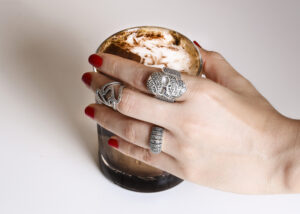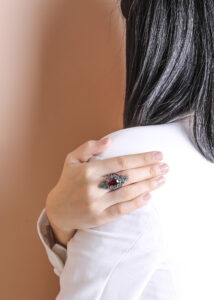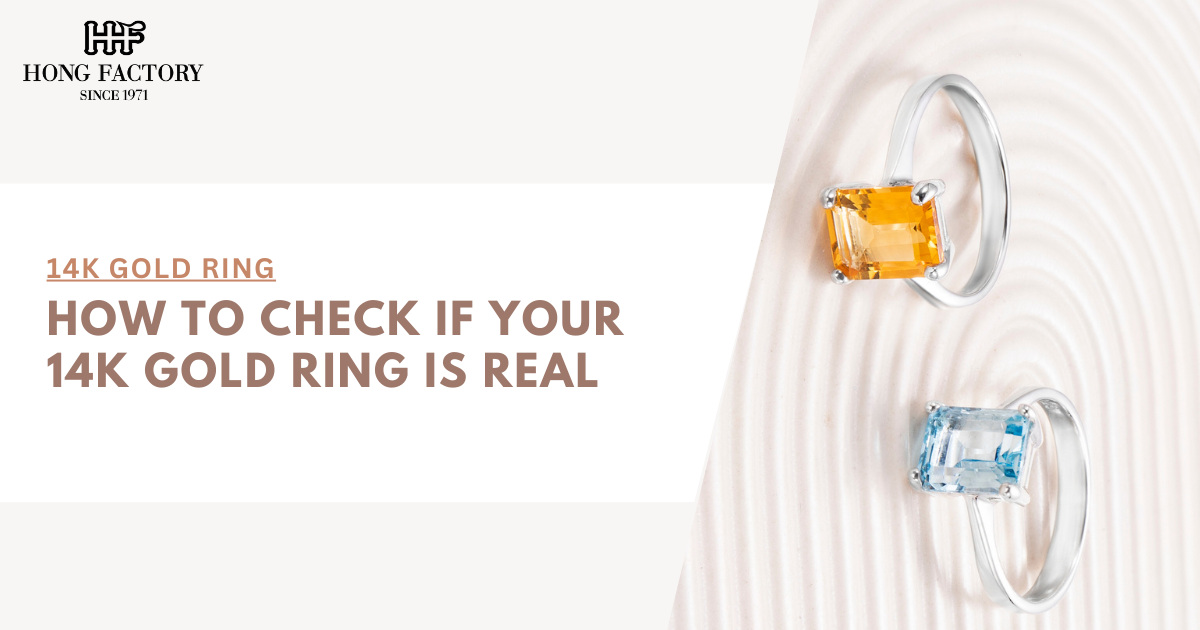
When buying or inheriting a piece of jewelry, it’s important to know whether it’s authentic. Gold rings, particularly 14K, are valuable and often passed down as heirlooms. But with the rise of gold-plated and imitation jewelry, you may wonder how to confirm if your piece is genuine. In this article, we’ll explore simple ways to check if your 14K gold ring is real, from at-home methods to professional testing. sterling silver meaning
What Is a 14K Gold Ring?
A 14K gold ring is made from 58.3% pure gold and 41.7% alloy metals like copper, silver, or zinc. This blend makes it more durable than higher-karat gold while still offering a warm, golden color. Because of its strength and affordability, 14K is one of the most popular choices for everyday rings such as wedding bands and engagement rings.
Why Authenticity Matters
Gold jewelry holds both sentimental and financial value. Knowing whether your 14K gold ring is genuine helps you:
- Avoid overpaying for fake jewelry.
- Ensure durability for everyday wear.
- Protect your skin from irritation caused by low-quality metals.
- Maintain proper resale or appraisal value.
Common At-Home Tests
While not as precise as professional testing, these methods can give you a good indication of authenticity.
1. Stamp or Hallmark Check
Most real 14K gold rings are stamped with markings such as “14K”, “585”, or “14KT.” If there’s no marking, it could be plated or counterfeit, although older rings may have worn-down stamps.
2. Magnet Test
Gold is not magnetic. Hold a strong magnet near your ring—if it sticks, the piece likely contains other metals and is not solid gold. Keep in mind, however, that some alloys in 14K gold are slightly magnetic, so this test is not 100% reliable.
3. Visual Inspection
Real gold has a consistent color throughout. If you see areas where the gold is fading or peeling to reveal another metal beneath, your ring is likely gold-plated.

4. Float Test
Drop your ring in a cup of water. Real gold is dense and will sink quickly, while fake or lightweight metals may float or sink slowly.
5. Scratch Test (Caution)
Scratching your ring on an unglazed ceramic tile should leave a gold streak if it’s real. However, this method risks damaging the ring and is not recommended for valuable pieces.
Professional Testing Methods
For certainty, jewelers and professionals use more advanced techniques:
- Acid Test: A small drop of nitric acid reveals whether the gold content is real or fake.
- Electronic Gold Tester: Measures electrical conductivity to determine gold purity.
- X-Ray Fluorescence (XRF): A non-invasive test that provides precise details about metal composition.
Pros of Owning a Real 14K Gold Ring
- Strong enough for daily wear.
- Retains long-term value.
- Less expensive than higher karat options.
- Hypoallergenic compared to base-metal jewelry.
Cons of Fake or Gold-Plated Rings
- Prone to tarnishing and peeling.
- May cause skin reactions.
- No significant resale value.
- Short lifespan compared to real gold.

Care Tips for 14K Gold Rings
- Clean regularly with mild soap and water.
- Store in a soft pouch to avoid scratches.
- Remove before swimming, exercising, or applying lotions.
- Have your ring professionally inspected and cleaned periodically.
Determining whether your 14K gold ring is real doesn’t have to be complicated. At-home tests like hallmark checks and magnet tests provide quick insights, while professional evaluations ensure accuracy. A genuine 14K gold ring offers durability, beauty, and value, making it a worthwhile investment.
